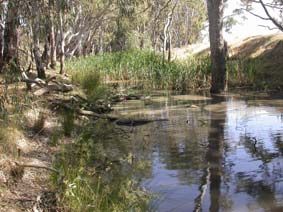Major Group: Insecta
Order: Diptera
Family: Muscidae |
Descriptive Features: head capsule incomplete, reduced in size and structure, often retractile into thorax
cephalic structure a "cephalopharyngeal" skeleton
mandibles usually with hooked apical tooth and lacking inner teeth
anterior spiracles absent
posterior spiracles on surface of last segment, separated, never spine-like
abdomen 8-segmented
Total length:
|

|
Muscidae |
|
|
|
Taxonomic Checklist: Subfamilies Genera
Muscinae
*Balioglutum illingworthi Aldrich
*Haematobia exigua de Meijere
*Hydrotaea 6 species
*Morellia hortensia Wiedemann
*Musca 6 species
*Muscina stabulans Fallen
*Myiophaea spissa Walker
*Neomyia 3 species
*Passeromyia 3 species
*Pyrella 2 species
*Synthesiomyia nudiseta Wulp
Phaoniiae
*Atherigona 27 species
*Brontaea 3 species
*Buccophaonia undescribed species
*Dichaetomyia 22 species
*Helina 37 species
*Hennigola setlifera Stein
*Metopomyia atropunctipes Malloch
*Neohelina 2 species
Phaonia 3 species
*Prohardyia 5 species
Mydaeinae
*Hebecnema uniseta Hennig
*Helinomydaea 2 species
Graphomya 2 species
*Gymnopapuaia hypopleuralis Malloch
*Myospila flavicans Malloch
Papuaia immaculata Vockeroth
*unplaced fuscitarsis Bergroth
*unplaced inducta Walker
Coenosiinae
*Heliographa 2 species
Limnophora 6 species
Lispe 8 species
*not sure if aquatic
|
|
Distribution: Australia wide
Sensitivity Rating: SIGNAL grade 1
Functional Feeding Group: predators |

|
Tuppal Creek near Deniliquin, NSW |
|
|
Ecology: Instream habitat: Muscid larvae occur within the margins of slow and fast flowing streams. They may be found in moss or other vegetation where they are frequently submerged.
Feeding ecology: Most larvae are predators feeding on insect larvae, particularly dipterans.
Habit:
Life history: |
| |
Information Sources: Williams 1980, Colless & McAlpine 1991, Merritt & Cummins 1996, Evenhuis 2008, Gooderham & Tsyrlin 2002
Key to Subfamilies: none
Key to Genera: none
Key to Species: none |
|
|
|